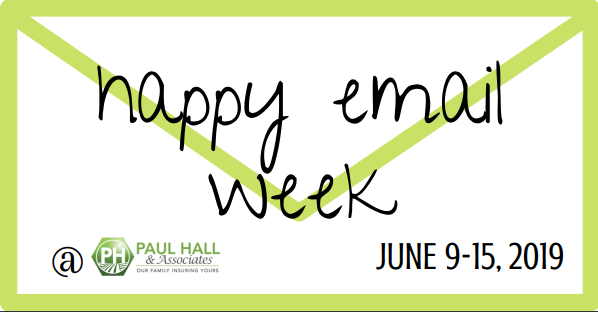
Of all the forms of communication that we use these days, email is a very popular one. Whether you are receiving work emails or being notified about the next best online sale at your local store, it’s likely that you interact with email every day. This week, we celebrate National Email Week and all the fun stuff that comes along with sending out or receiving an email!
When you’re sending out an email, it’s imperative to be professional. Below are a few tips to help you gain a little bit more information on email etiquette and developing your skills!
1. Have a clear but concise subject.Typically, people decide the importance of the email based on the subject line. It’s good to keep it short and sweet but informative about the content. Some examples of a good subject line include the following: “Time of meeting,” “Ideas for future,” or “Questions about the proposal.”
2. Use a professional email address.If you work for a business that has provided you with an email or if you have been provided a school email, that is an appropriate address to use. If you have neither a work or school email, an email address that includes your first and last name is also a professional option.
Try to avoid using an email that you may have created when you were very young that does not include either your first or last name. For example, “ihearthorses@___.com, should not be an address that you use to email someone professionally.
3. Should you reply-all?When replying to an e-mail that has multiple recipients, first consider if everyone needs to see your reply or not. It can become very bothersome if everyone who received the original email ends up receiving several other emails that do not pertain to them. Unless everyone needs to see your response, be sure to only reply to the original sender.
4. Add a signature block.
At the end of an email where a typical signature would go, it is professional to use a signature block that provides the reader with more information about you. This extra information should include your full name, title, company name and contact information. You can also add other necessary material but remember to keep it professional. The font, font size, and color of the signature block should be uniform with the rest of the email.
5. Use professional greetings.When sending an email, be sure to avoid using relaxed sayings such as “Hey y‘all,” “What’s up?” or “Hi guys.” It is also a good idea to stay away from shortening a person’s name unless you know for a fact that they prefer to be called by a nickname.
6. Use exclamation points in moderation.No matter how excited you may be, in a professional email, use only one exclamation point to show your excitement. Using more than one may look immature or unprofessional.
7. Be careful using humor.Have you ever sent a text that you meant to be funny or sarcastic, but the person who received the text didn’t understand the joke or maybe even got upset over it? Humor is not always received through a message in the way that you intended. To avoid this becoming an issue, it is safest to leave out humor unless you know the recipient well enough.
8. Proofread, proofread, proofread!Your mistakes might not be noticeable to you, but others will spot them. Don’t count on spell-check to correct all your mistakes. Go over your email several times, reading it out loud before you send it out. It is also a good idea to have another person look over it to see if they catch any mistakes that you may not have. Finally, be sure to check that you are sending your email to the correct recipient. A simple mistake creates judgement from others, so be sure to proofread every email to prevent that from happening!
9. Add the recipients email address last.To prevent accidentally sending an unfinished email, a smart thing to do is add the recipients email address after you have completely finished typing and proofreading the message.
Large, colorful, bubbly fonts are not the go-to options for a professional email. In other words, the font size, type and color should not be the same for an email as it would be for a birthday card. Try sticking to fonts that are easy to read such as Arial or Times New Roman and keep your font size around 10 or 12.
11. Don't share anything you wouldn’t want anyone else to see.
Every message sent over the internet, whether it is through text, email, or social media, leaves a trail. A good guideline to go by is to assume that others will see your email so that your career or life isn’t affected by a single email you sent. Since email is extremely easy to forward or screenshot, it is better to be safe than sorry and think before you send.
We hope this blog helps you improve your email etiquette, and maybe gave you a few tips and tricks you’ve never thought of! Happy National Email week from all of us at Paul Hall & Associates and feel free to email us anytime!